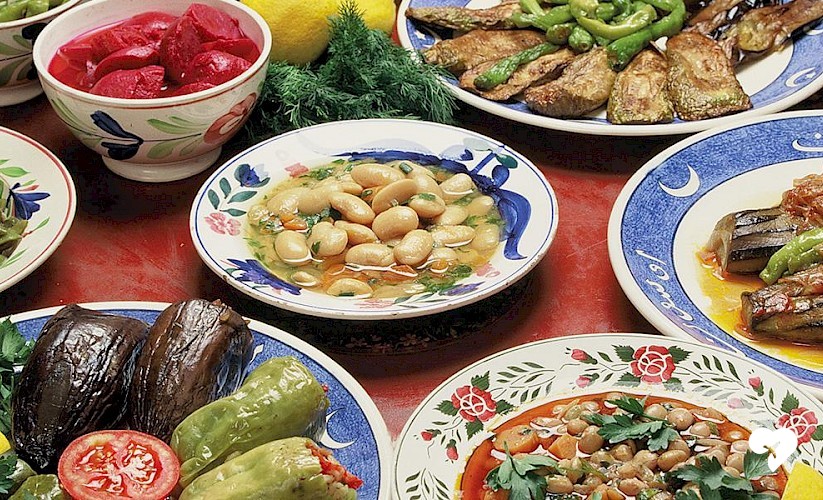The importance of culinary art to the Ottoman Sultans, who followed the sacred advice of Islam to "Feed the Hungry", is evident to every visitor of Topkapı Palace.
The huge kitchens were housed in several buildings under ten domes. By the 17th century, some thirteen hundred kitchen staff were housed in the Palace. Hundreds of cooks, specializing in different categories, such as soups, pilafs, kebabs, vegetables, fish, bread, pastries, desserts, syrups and jams, and beverages, fed as many as ten thousand people a day, and, in addition, sent trays of food to others in the city as a royal favour.
The importance of food has also been evident in the structure of the Ottoman military elite, known as the Janissaries. The commanders of the main divisions were known as the soup men, other high ranking officers included the Chief Cook, the Scullion, the Baker, and the Pancake Maker, though their duties had little to do with food. The huge cauldron used to make pilaf had special symbolic significance for the Janissaries and was the focal point of each division. The kitchen was at the same time the centre of politics, for whenever the Janissaries demanded a change in the Sultan's Cabinet or the head of a grand vizier, they would overturn their pilaf cauldron. "Overturning the cauldron" is an expression still used today to indicate a rebellion in the ranks.
 Saffron / Photo: Gülcan ACAR
Saffron / Photo: Gülcan ACAR
It was in this environment that hundreds of the Sultans' chefs, who dedicated their lives to their profession, developed and perfected the dishes of the Turkish cuisine, which was then adopted in the areas from the Balkans to southern Russia, and even as far as North Africa. İstanbul then had all the prestige, so its ways were imitated. At the same time, it was supported by an enormous organization and infrastructure which enabled all the treasures of the world to flow into it. The provinces of the vast Empire were integrated by a system of trade routes with caravanserais for refreshing the weary merchants and security forces. The Spice Road, the most important factor in culinary history, was under the full control of the Sultan. Only the best ingredients were allowed to be traded under the strict standards established by the courts.
Guilds played an important role in the development and sustenance of the cuisine. These included hunters, fishermen, cooks, kebab cooks, bakers, butchers, cheese makers and yogurt merchants, pastry chefs, pickle makers, and sausage merchants. All of the principal trades were believed to be sacred and each guild traced its patronage to the saints. The guilds set price and quality controls. They displayed their products and talents in spectacular parades through İstanbul streets on special occasions, such as the circumcision festivities for the Crown Prince or religious holidays.
Following the example of the Palace, all of the grand Ottoman houses boasted elaborate kitchens and competed in preparing feasts for each other as well as for the general public. In fact, in each neighbourhood, at least one household would open its doors to anyone who happened to stop by for dinner during the holy month of Ramadan, or during other festive occasions. This is how the traditional cuisine evolved and spread, even to the most modest corners of the country.
